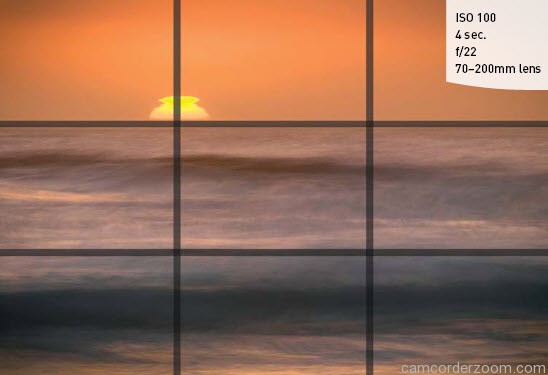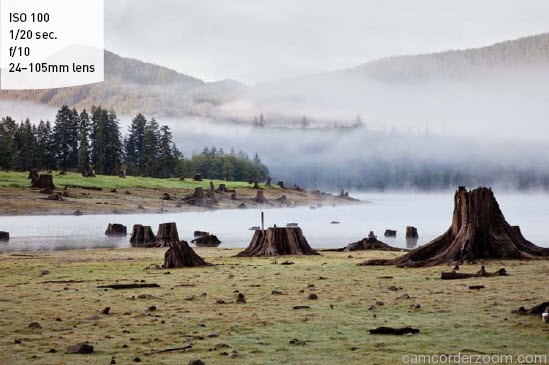When we look at a photograph, our eyes tend to focus on certain parts of the image before we notice the rest. It’s usually in those first few seconds of viewing a photograph that we decide if we like it or not. Test this out. Open a magazine and take a quick look at the first photo you see. Your eyes will most likely be drawn to the brightest part of the picture first. Next you’ll probably notice the sharpest, most infocus parts of the image, and then finally you’ll start moving your eyes, looking for the most vibrant colors. The placement of these elements helps make up the photograph’s overall composition, and your goal should be to keep the viewer’s eyes interested and moving among all of the elements of your images.
RULE OF THIRDS
I discussed the importance of the rule of thirds, and you’ll read even more about it in the chapters to come. It’s one of the most basic rules of composition, and it works with nearly every type of image.
In landscape photography, you will often compose your image so that both the earth and the sky appear in the same shot. Pay attention to the placement of your horizon, as it’s generally best to keep the horizon line away from the middle of the frame. Try to compose your shot so that the horizon falls on either the top or bottom third-line of the frame (Figure 5.18).

For a scene with a specific point of interest, such as a building or tree, compose that object on one of the intersecting third-lines within your frame. If you would like a little extra help, you can enable the grid display to show up in your viewfinder or on the LCD Monitor (for Live View);
CREATING DEPTH
With landscape photography, finding a scene with a foreground, a middle ground, and a background can add depth to your image (Figure 5.19). Effectively using all three of these areas gives the image a three-dimensional feel and offers several distinct spaces for the viewer’s eyes to travel.










